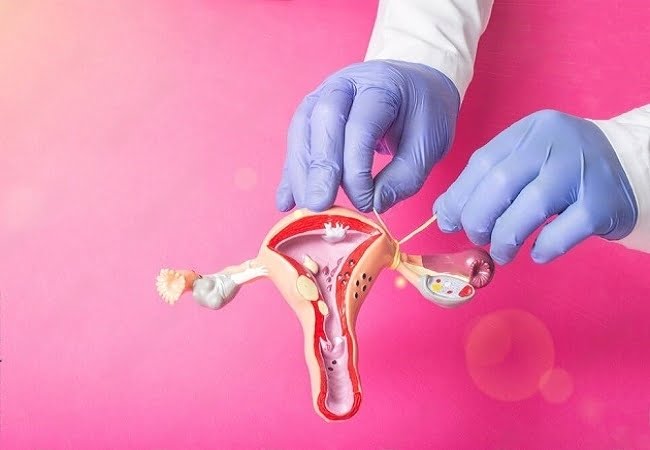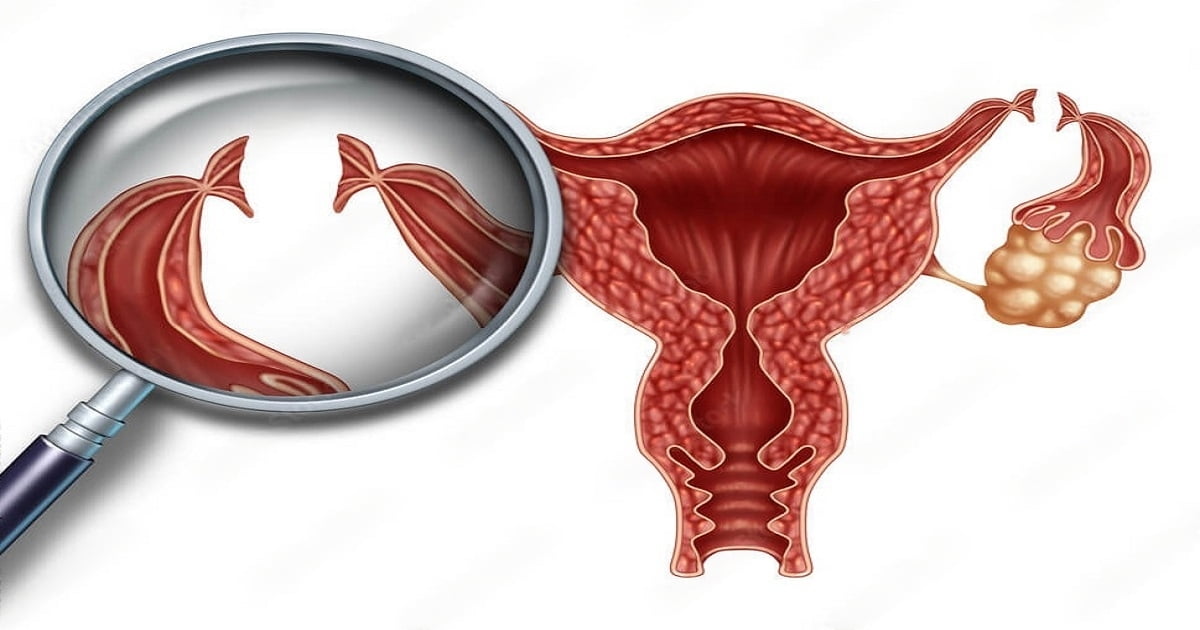What is Tubectomy?

Tubectomy
Tubectomy is a surgical procedure, also known as tubal ligation, where a woman’s fallopian tubes are cut, tied, or sealed to prevent pregnancy. This procedure is considered a permanent method of birth control, and it effectively prevents the sperm from reaching the egg, making fertilization impossible.
Why Choose Tubectomy?
Many women choose tubectomy as a long-term contraceptive option when they are sure they do not want to have more children in the future. It is a highly effective method of birth control, with a failure rate of less than 1%.
What is Tubectomy Reversal?
On the other hand, tubectomy reversal is a surgical procedure that restores a woman’s fertility by reconnecting the fallopian tubes. This procedure, also known as tubal ligation reversal or tubal reanastomosis, allows the woman to conceive naturally by facilitating the sperm-egg encounter in the fallopian tubes.
Reasons for Tubectomy Reversal:
Some women may change their minds about wanting children after undergoing a tubectomy or may wish to have children with a new partner. In these cases, a tubectomy reversal can be a viable option.
Who Can Undergo a Tubectomy Reversal?
Not everyone is a suitable candidate for tubectomy reversal. Let’s discuss the eligibility criteria and age considerations.
Eligibility Criteria:
Several factors determine whether a woman is a suitable candidate for tubectomy reversal:
- Type of tubal ligation: The success of reversal surgery depends on the type of tubal ligation performed. Women with minimal damage to their fallopian tubes have a higher chance of successful reversal.
- Remaining tubal length: A sufficient length of healthy fallopian tubes is essential for successful reversal.
- Overall health: Good overall health and the absence of any medical conditions that may complicate surgery are important factors.
- Fertility factors: Age, egg quality, and the partner’s sperm quality can all impact the success of a tubectomy reversal.
Age Considerations
Age plays a significant role in the success of tubectomy reversal. Generally, younger women have a higher chance of achieving pregnancy after the procedure. However, there is no strict age limit, and many women in their 40s have successfully undergone the procedure.
Preparing for Tubectomy Reversal:
Before undergoing a tubectomy reversal, there are several steps you need to take.
What happens before tubal ligation reversal?
- Consultation: You will need to consult with a fertility specialist or surgeon experienced in tubal reversal procedures. During this consultation, the doctor will evaluate your medical history, discuss the surgery, and determine your eligibility for the procedure.
- Preoperative Evaluation: You may undergo several tests to assess your fertility and overall health, such as blood tests, imaging studies, and a semen analysis for your partner.
How do I prepare for Tubectomy Reversal?
There are some lifestyle changes and medical preparations you need to make before the surgery:
- Lifestyle Changes
- Maintain a healthy weight
- Quit smoking
- Limit alcohol consumption
- Exercise regularly
- Follow a balanced diet
- Medical Preparations
- Inform your doctor about any medications or supplements you are taking, as some may need to be discontinued or adjusted before the surgery.
- Obtain any necessary preoperative clearance from your primary care physician or other specialists.
- Follow your doctor’s instructions regarding fasting and any bowel preparation that may be required.
Also Read: Laparoscopy for Infertility
Tubectomy Reversal Procedure
A tubectomy reversal, also known as tubal ligation reversal, is a surgical procedure aimed at reconnecting the fallopian tubes to restore fertility. Let’s discuss the surgical methods and anesthesia used during the procedure.
Surgical Methods
There are two primary surgical methods for tubectomy reversal:
- Microsurgical Tubal Reanastomosis: This procedure involves using an operating microscope and specialized surgical instruments to delicately remove any damaged sections of the fallopian tubes and stitch the healthy ends together. This method is precise and minimizes the risk of scarring and damage to the tubes.
- Laparoscopic Tubal Reversal: In this minimally invasive approach, small incisions are made in the abdomen, and a laparoscope (a thin, lighted tube with a camera) is inserted to visualize the fallopian tubes. The surgeon then uses specialized instruments to perform the reanastomosis.
Anesthesia
Tubectomy reversal is typically performed under general anesthesia, ensuring that you are asleep and comfortable throughout the procedure.
Recovery After a Tubectomy Reversal
Recovering from a tubectomy reversal is an essential aspect of the process. Let’s explore recovery time and postoperative care.
Recovery Time
Recovery time can vary depending on the surgical method used and individual factors. Generally, you can expect the following:
- Microsurgical Tubal Reanastomosis: Hospital stay of 1-2 days and recovery at home for 2-4 weeks.
- Laparoscopic Tubal Reversal: Hospital stay of a few hours to overnight and recovery at home for 1-2 weeks.
Postoperative Care
Your doctor will provide you with specific instructions for postoperative care, which may include:
- Taking pain medications as prescribed
- Caring for your incision site and keeping it clean and dry
- Avoiding heavy lifting and strenuous activities for a few weeks
- Wearing loose, comfortable clothing to minimize irritation around the incision site
- Scheduling follow-up appointments to monitor your healing and progress
Remember, it’s essential to listen to your body and give yourself time to heal.
Also Read: What is Infertility?
How Soon After Tubal Reversal Can I Try to Conceive?
One of the most common questions women have after a tubectomy reversal is when they can try to conceive. Let’s discuss the optimal time frame and factors affecting conception.
Optimal Time Frame
Your doctor will typically recommend waiting for at least one full menstrual cycle after the surgery before trying to conceive. This waiting period allows your body to heal and return to its normal hormonal balance.
Factors Affecting Conception
Several factors can impact your ability to conceive after a tubectomy reversal:
- Age: As you age, your fertility naturally declines, which may affect your chances of conceiving.
- Remaining Tubal Length: The length of the remaining healthy fallopian tubes can impact the success of the reversal and your ability to conceive.
- Sperm Quality: Your partner’s sperm quality plays a role in your ability to achieve a successful pregnancy.
- Overall Health: Maintaining a healthy lifestyle, including a balanced diet and regular exercise, can positively impact your fertility.
Tubectomy Reversal Success Rate
Understanding the success rates of tubectomy reversal can help set realistic expectations for the outcome of the procedure.
General Success Rates
Tubectomy reversal success rates can vary depending on various factors, but on average, 50-80% of women who undergo the procedure can achieve a successful pregnancy. It’s essential to discuss your individual chances of success with your doctor.
Factors Affecting Success
Several factors can influence the success of a tubectomy reversal:
- Type of tubal ligation: The success of reversal surgery depends on the initial tubal ligation method and the extent of damage to the fallopian tubes.
- Age: Fertility naturally declines with age, and older women may experience lower success rates.
- Remaining tubal length: A sufficient length of healthy fallopian tubes is essential for a successful reversal.
- Overall health: Good overall health and the absence of other fertility issues can positively impact success rates.
Risks of Tubectomy Reversal
As with any surgical procedure, there are inherent risks associated with tubectomy reversal.
Surgical Risks
Some surgical risks associated with tubectomy reversal include:
- Infection
- Bleeding
- Damage to surrounding organs
- Anesthesia complications
Long-term Risks
In addition to surgical risks, there are some long-term risks to consider:
- Ectopic pregnancy: Tubectomy reversal may increase the risk of an ectopic pregnancy, where the fertilized egg implants outside the uterus.
- Regret: Some women may regret undergoing the procedure if they do not achieve a successful pregnancy or change their minds about having more children.
Discussing these risks with your doctor is crucial to making an informed decision about whether tubectomy reversal is right for you.
Advantages of Tubal Ligation Reversal
Despite the risks, tubectomy reversal offers several advantages compared to other fertility treatments.
Benefits
Some benefits of tubectomy reversal include:
- Natural conception: Tubectomy reversal allows women to conceive naturally without the need for assisted reproductive technologies (ART), such as in vitro fertilization (IVF).
- Multiple pregnancies: After a successful tubectomy reversal, women can potentially have multiple pregnancies without further medical intervention.
- Cost: In some cases, tubectomy reversal can be more cost-effective than other fertility treatments, such as IVF.
Comparison to Other Fertility Treatments
Tubectomy reversal is not the only option for women seeking to restore their fertility. Other fertility treatments, such as IVF, may also be effective. However, there are some key differences to consider:
- Invasiveness: Tubectomy reversal is a surgical procedure, while IVF is a series of non-surgical treatments that involve hormone injections and egg retrieval.
- Success rates: IVF success rates may be higher for some women, particularly those with more complex fertility issues.
- Multiple pregnancies: IVF can result in multiple pregnancies, but this is more controlled than with tubectomy reversal.
Is Tubal Reversal Painful?
Pain is a common concern for women considering tubectomy reversal. Let’s discuss the pain experienced during the procedure and recovery.
Pain During the Procedure: During the tubectomy reversal procedure, you will be under general anesthesia, ensuring that you remain comfortable and pain-free. The anesthetic will keep you asleep throughout the surgery, eliminating any pain sensation.
Pain During Recovery: As with any surgical procedure, some pain and discomfort during recovery are normal. The intensity and duration of pain can vary depending on the surgical method, individual factors, and pain tolerance. Your doctor will likely prescribe pain medication to manage discomfort during the initial stages of recovery.
Cost of Tubal Reversal Surgery in India
If you’re considering a tubectomy reversal in India, understanding the cost is essential. Let’s explore the price range and factors that may influence the overall cost.
Price Range: In India, the cost of tubectomy reversal surgery can range from ₹1,00,000 to ₹4,00,000 (approximately $1,300 to $5,300) depending on various factors.
Factors Affecting Cost
Several factors can influence the cost of tubectomy reversal surgery in India:
- Surgeon’s expertise: The experience and reputation of the surgeon can affect the cost.
- Hospital or clinic: The type and location of the healthcare facility can influence the overall expense.
- Surgical method: The specific surgical technique used may have an impact on the cost.
- Additional treatments: Any necessary pre- or postoperative treatments can add to the expense.
Tubal Ligation Reversal at Age 45: Is it Possible?
As women get older, they may wonder if tubectomy reversal is still a viable option. Let’s discuss age-related success rates and considerations for older patients.
Age-related Success Rates
Age plays a crucial role in the success of tubectomy reversal. Fertility naturally declines with age, and older women may experience lower success rates. While tubectomy reversal is technically possible at age 45, the chances of achieving a successful pregnancy may be significantly reduced compared to younger patients.
Considerations for Older Patients
For women aged 45 or older, several factors should be taken into account:
- Health risks: Older patients may have a higher risk of complications during surgery and pregnancy.
- Decreased ovarian reserve: As women age, the number and quality of eggs decline, which can affect the chances of conception.
- Alternative fertility treatments: In some cases, alternative fertility treatments, such as in-vitro fertilization (IVF), may be more suitable for older women.
Tubectomy Reversal Alternatives
If tubectomy reversal is not the right choice for you, there are alternatives to consider.
In-vitro Fertilization (IVF)
IVF is a popular alternative to tubectomy reversal. It involves stimulating the ovaries to produce multiple eggs, which are then fertilized with sperm in a laboratory. The resulting embryos are transferred to the uterus, bypassing the need for functional fallopian tubes. IVF can be a viable option for women who have undergone tubal ligation or have other fertility issues.
Adoption
Adoption is another option for those who want to expand their family after tubal ligation. Adopting a child can be a fulfilling and life-changing experience, providing a loving home to a child in need. There are various adoption agencies and support networks available to guide you through the process.
Conclusion
Understanding the intricacies of tubectomy and tubectomy reversal is essential for women considering this life-changing decision. From the procedure itself to recovery, cost, age-related factors, and alternatives, it’s crucial to weigh all the options and potential outcomes. By being well-informed, you can make the best choice for your unique situation, ultimately enhancing your family planning journey. Always consult a qualified healthcare professional to discuss your individual circumstances and make an informed decision that aligns with your personal goals and desires.
F.A.Q
Q: What is tubectomy reversal?
A: Tubectomy reversal is a surgical procedure that aims to restore the fertility of women who have previously undergone tubal ligation, also known as tubectomy.
Q: Is a tubectomy reversible?
A: While tubectomy is considered a permanent form of birth control, tubal ligation reversal surgery can be performed in certain cases to restore fertility.
Q: What is called tubectomy?
A: Tubectomy, also known as tubal ligation or female sterilization, is a surgical procedure that involves cutting, sealing, or blocking the fallopian tubes to prevent eggs from reaching the uterus and being fertilized by sperm.
Q: What are the two types of tubectomy?
A: The two main types of tubectomy are laparoscopic tubal ligation, which involves making small incisions in the abdomen and using a camera to guide the procedure, and mini-laparotomy tubal ligation, which involves making a larger incision in the abdomen.
Q: What are the risks of tubal reversal?
A: Tubal reversal surgery carries risks, such as bleeding, infection, damage to surrounding organs, and failure to restore fertility. It is important to discuss those risks with a healthcare provider before undergoing the procedure.
Q: What happens after tubal reversal surgery?
A: After tubal reversal surgery, women may experience cramping, bloating, and vaginal bleeding. It is important to avoid strenuous activity and sexual intercourse for a period of time to allow for proper healing.
Q: Do we get periods after tubectomy?
A: Yes, women continue to menstruate after undergoing tubectomy as the procedure does not affect the production of hormones by the ovaries.
Q: Can tubectomy be reversed in India?
A: Yes, tubectomy can be reversed in India through a surgical procedure called tubal ligation reversal.
Q: Is tubectomy painful?
A: Tubectomy can cause some pain and discomfort during and after the procedure, but anesthesia is used to minimize pain.
Q: Which tubectomy is best?
A: The choice of tubectomy procedure depends on various factors, including the patient’s medical history and preferences, and should be discussed with a healthcare provider. Laparoscopic tubal ligation is the most common and preferred method of tubectomy.
Q: Which type of tubectomy is best?
A: Laparoscopic tubal ligation is considered the best type of tubectomy due to its safety, effectiveness, and minimally invasive nature.
Q: Which body part is removed in a tubectomy?
A: In tubectomy, no body parts are removed. The procedure involves blocking, sealing, or cutting the fallopian tubes to prevent the eggs from reaching the uterus.
Q: Which ring is used in tubectomy?
A: A small silicone or plastic ring, called a Falope ring, is commonly used in tubectomy. The ring is placed around the fallopian tubes to block them and prevent fertilization.


